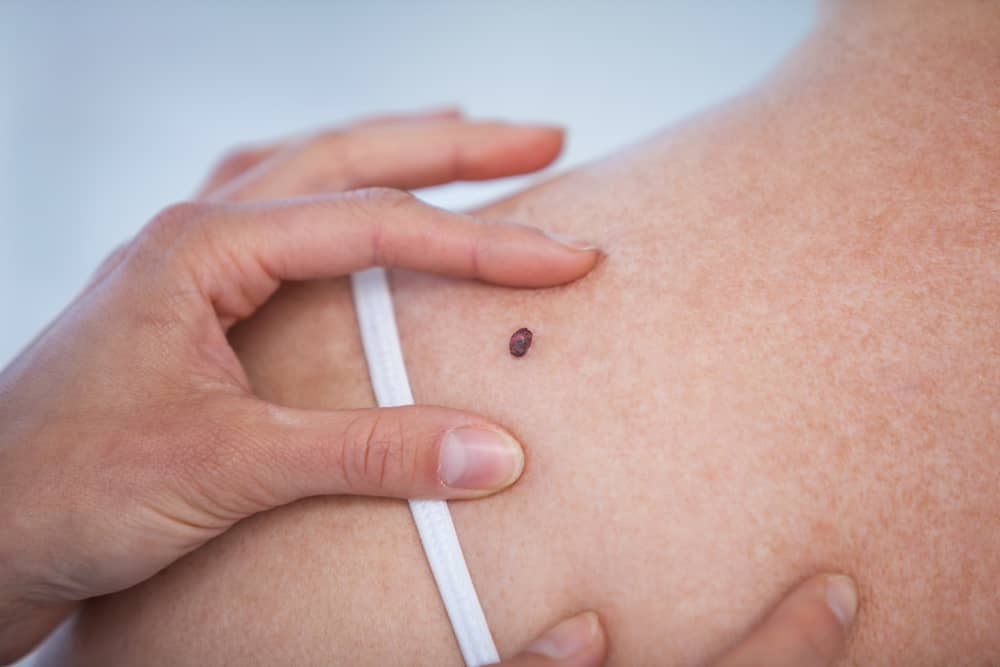Few skin cancers are easy to detect. While some will show up as a swollen or irritated area on the skin, others can spread in ways that are not always obvious. As such, you need to make sure you’re doing what you can to spot your skin cancer early so that treatment options remain open.
Having experienced a family member struggle with skin cancer, here are some simple tips for keeping a good eye out for skin cancer before it takes hold. Few skin cancers are easy to detect. Some will show up as a swollen or irritated area on the skin. However, you need to make sure you’re doing what you can to spot it early, as skin cancer can be challenging to detect.

What is skin cancer?
Skin cancer is a type of cancer that starts in the skin. It is the most common type of cancer in the United States. If you have skin cancer, it is essential to see a doctor. The doctor will determine if cancer has been there for a long time and how much of it has grown so that treatments can be planned. The two most common types of skin cancer are basal cell carcinoma (BCC) and squamous cell carcinoma (SCC). Basal cell carcinoma starts in the layer of cells that cover the body’s surface and form normal skin.
Detection of Skin Cancer
One in five Americans will develop skin cancer in their lifetime. Early detection is key to successful treatment. Skin cancer can often be treated successfully if it is caught early. The earlier a cancer is detected, the better the chance of successful treatment.
American Cancer Society’s mission is to eradicate cancer as a major health problem by preventing and treating cancer; advancing research efforts to do so; helping people with cancer and their families through education, advocacy, and service; and developing a community of researchers searching for ways to prevent, diagnose, treat, and cure this disease.
Causes of Skin Cancer
Skin cancer is cancer that starts in the skin. Skin cancer is the most common type of cancer. There are many different types of skin cancer. The most common types are basal cell carcinoma, squamous cell carcinoma, and melanoma. Skin cancer can occur anywhere on the body, but it is most common on the head, neck, and hands. The cause of skin cancer is not known.
Types of Skin Cancer
There are three main types of skin cancer: basal cell carcinoma, squamous cell carcinoma, and melanoma. Basal cell and squamous cell carcinomas are the most common forms of skin cancer. Basal cell carcinoma is found most often on sun-exposed body areas such as the head, neck, and back. It can also occur in areas covered by long hair. Squamous cell carcinoma is usually found in areas of the body that come into contact with water (such as the hands, feet, and underarms). It can also occur in areas covered by short hair.
Risk Factors for Skin Cancer
There are many risk factors for skin cancer, including a family history of the disease, exposure to ultraviolet radiation (sunlight or tanning beds), and fair complexion. If you or a loved one has been diagnosed with skin cancer, it is essential to seek prompt medical attention.
Chemical burns are injuries caused by contact with certain chemicals. They may appear as a white, yellow, or brownish area on the skin or eyes. Chemical burns can be superficial (affecting only the outer layer of the skin) or deep (affecting more profound layers of the skin or muscles)
Prevention of Skin Cancer
Prevention of skin cancer is essential, and one of the best ways to do this is to protect your skin from the sun. Sunscreen is a great way to protect your skin, and it’s essential to use sunscreen every day, even when it’s cloudy.
Detection of Skin Cancer in its Early Stages
One of the essential methods for detecting skin cancer in its early stages is to perform regular self-exams. By checking your skin regularly for any changes, you may be able to see cancerous lesions early on when they are still small and easy to treat.
Things You Should Keep In Your Mind:
- What are the different types of skin cancer?
- What are the most common symptoms of skin cancer?
- What are the most common risk factors for skin cancer?
- Where is skin cancer most commonly found?
- What is the cause of skin cancer?
- How can skin cancer be treated?
- What is the prognosis for someone with skin cancer?
Reconstruction After Skin Cancer
Reconstruction after skin cancer can involve several surgical procedures to restore the appearance and function of the affected area. Skin grafts are harvested from a donor site, usually the patient’s own body, and used to cover areas of defect. Skin grafts can be used to cover severe burns, including full-thickness dermal and epidermal defects, which may otherwise require deep excision and reconstruction of the entire affected area.
What are the different types of skin cancer?
There are three main types of skin cancer: basal cell carcinoma, squamous cell carcinoma, and melanoma. Basal cell carcinoma (BCC) is the most common type of skin cancer. It often starts as a small, painless lump that appears on the skin’s surface. Often, these lumps are red, irritated, or bleeding and may itch. Squamous cell carcinoma (SCC) is a less common form of skin cancer that often develops as a hardened, scaly bump on the skin’s surface.
Conclusion
The key to a great paragraph is using the right words. When you are looking to generate a section, use solid and descriptive words to help engage the reader. If a word or phrase is used to describe something happening, make sure that it is descriptive and allows the reader to visualize what is being described.




